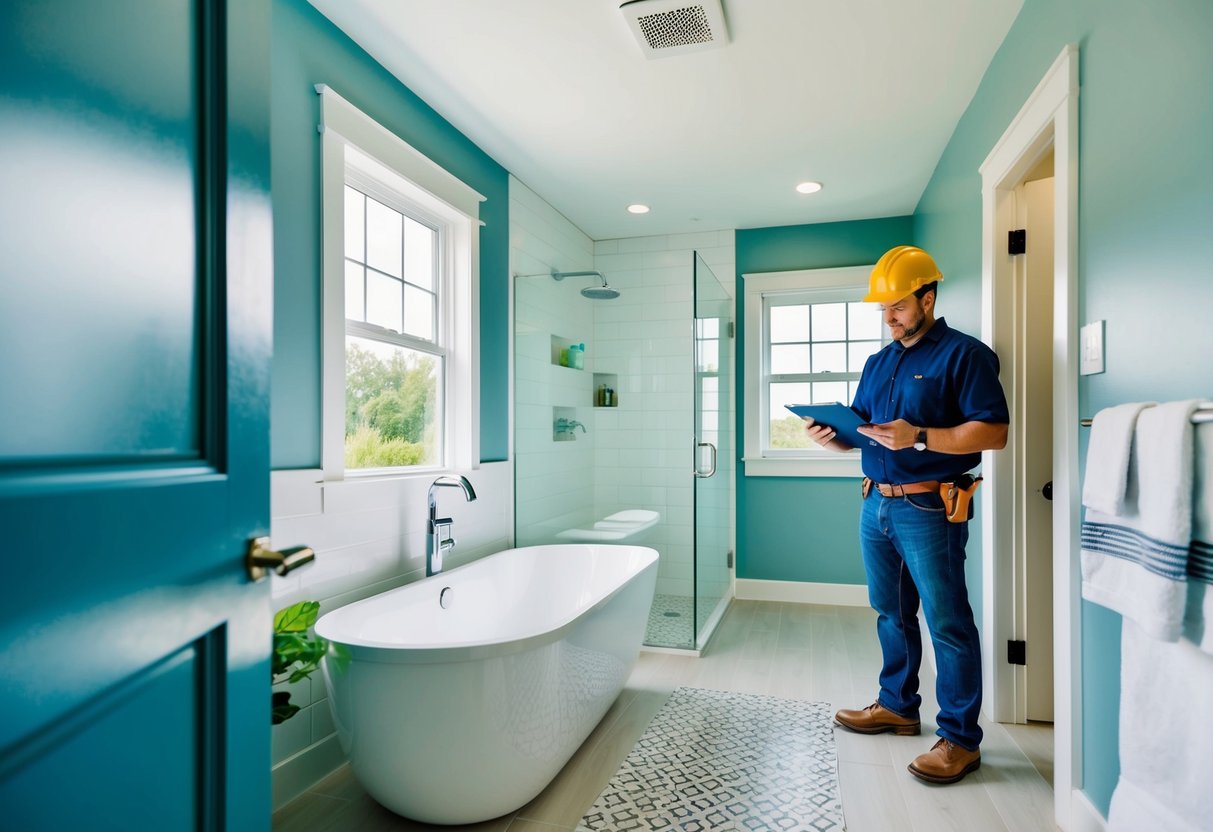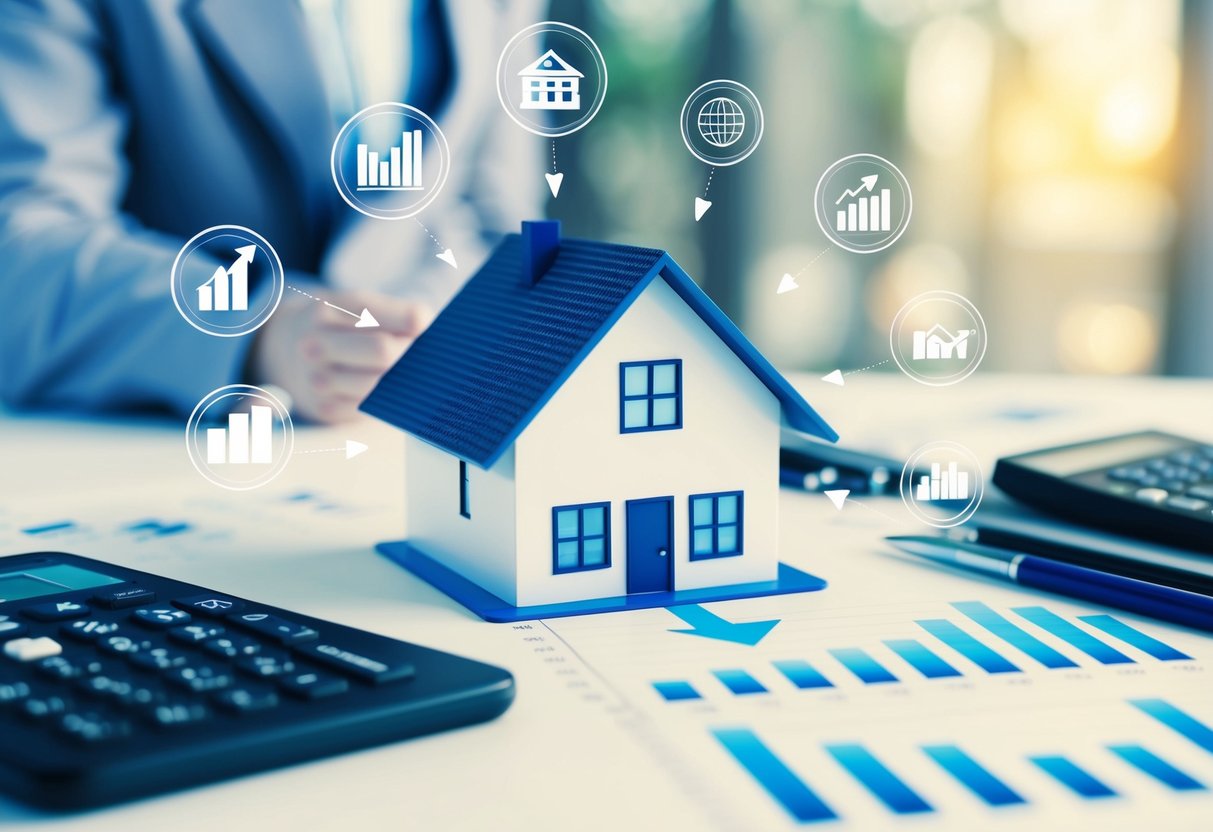Building an investment property can be an exciting way to grow your wealth. It lets you create a custom home that matches current market demands.
You can also take advantage of tax benefits and depreciation allowances on new builds.

Building a new investment property gives you more control over the design and features to attract quality tenants. You can choose modern, energy-efficient fixtures that may reduce ongoing costs.
New properties often require less maintenance in the early years too.
There are some drawbacks to consider. Building costs can be unpredictable, and delays are common.
Finding the right block of land in a good area can be tricky. You may face a period without rental income while the property is under construction.
It’s important to weigh up these factors against the potential long-term gains.
Key Takeaways
- New builds offer tax benefits and customisation options for investors
- Construction costs and delays can impact your investment timeline
- Location and market demand are crucial factors in the success of a new investment property
Benefits of Building an Investment Property

Building an investment property offers unique advantages for investors. It allows you to create a tailored asset that can potentially grow in value over time.
Customisation and Modern Features
When you build, you have control over the design and features. You can work with builders and architects to create a property that meets your exact needs.
This lets you include modern, energy-efficient features that tenants often want.
You can choose the layout, finishes, and appliances. This helps make your property more appealing to renters.
Energy-efficient features like solar panels or double-glazed windows can lower running costs. These extras may let you charge higher rent.
New builds often need less maintenance in the early years. This can save you money on repairs and upkeep.
Potential Tax Advantages
Building a new investment property can offer tax benefits. You may be able to claim depreciation on the building and its fixtures.
This can reduce your taxable income from the property.
Some costs of building may be tax-deductible. These could include loan interest during construction and some building-related expenses.
In some areas, you might pay less stamp duty when building. This is because you’re only paying duty on the land value, not an existing structure.
Always check with a tax expert to understand the current rules and how they apply to your situation.
Long-Term Capital Growth
New properties often have strong potential for long-term value growth. As the property ages, the land it sits on typically increases in value.
You’re starting with a fresh, modern asset. This can be attractive to future buyers if you decide to sell. The property’s newness may help it hold its value better in the early years.
By building in growing areas, you may see faster appreciation. Look for locations with planned infrastructure or development. These factors can boost property values over time.
Financial Considerations

Building an investment property involves careful money planning. You need to think about upfront costs, ongoing payments, and how to use debt wisely.
Initial Budget and Costs
When building, you’ll face many upfront expenses. These include land purchase, council fees, and building costs.
Stamp duty is often lower for vacant land compared to existing homes. This can save you money at the start.
You’ll need to budget for architects, builders, and materials. Don’t forget extras like landscaping and fencing.
Always add a buffer of 10-20% to your budget for surprises.
Construction loans work differently from standard home loans. They release funds in stages as building progresses. This can help manage cash flow but may mean higher interest rates at first.
Loan Repayments and Interest Rates
Your loan structure is key when building an investment property.
Construction loans often start as interest-only. This keeps payments low while you’re building and not earning rent.
After construction, you’ll likely switch to a standard investment loan. Your repayments will include principal and interest.
Shop around for the best rates and terms. Remember, interest on investment loans is tax-deductible.
Consider fixing part of your loan to protect against rate rises. But keep some variable to maintain flexibility.
Talk to a financial advisor about the best mix for your situation.
Leverage and Investment Strategy
Leverage means using borrowed money to boost your investment power. When building, you can often borrow up to 80% of the property’s value.
This lets you control a larger asset with less of your own cash.
Your strategy might involve negative gearing for tax benefits. Or you might aim for positive cash flow from day one.
Either way, make sure your investment fits your long-term financial goals.
Think about how this property fits with your other assets. Diversification is important.
Building can let you create a property that matches market demand, potentially increasing your returns.
Potential Risks and Limitations

Building an investment property comes with several challenges. These include market shifts, construction issues, and rental income uncertainties. Let’s explore these key areas to help you make an informed decision.
Market Fluctuations and Demand
Property markets can be unpredictable. Values may drop after you’ve started building, affecting your investment. You might find less demand for new homes in some areas.
Keep an eye on local trends. Are similar properties selling well? What’s the outlook for the neighbourhood?
Consider your risk tolerance. Can you handle a dip in property value?
It’s wise to chat with real estate pros about market forecasts.
Your investment goals matter too. Are you after quick gains or long-term growth? New builds often take time to appreciate in value.
Construction Delays and Builder Reliability
Building projects can hit snags. Bad weather, material shortages, or labour issues might slow things down. This can mess up your timeline and budget.
Pick your builder carefully. Ask for references and check their track record. A dodgy builder could leave you with a half-finished house or shoddy work.
Council permits can be a headache. Make sure you understand local rules before you start. Unexpected issues here can cause costly delays.
Have a buffer in your budget for surprises. It’s smart to plan for things to take longer or cost more than you expect.
Rental Yield and Vacancy Rates
New properties often command higher rents, but this isn’t guaranteed. You’ll need to price your rental right for the local market.
Check vacancy rates in the area. High rates might mean trouble finding tenants. This could leave you out of pocket if the property sits empty.
Rental yield is key. Will the rent cover your mortgage and other costs? Do your sums carefully.
New estates can have lots of similar properties. This might make it harder to stand out to potential tenants.
Think about your target renters. Is there demand for the type of property you’re building? Matching your investment to market needs is crucial.
Evaluating Location and Property Features

Choosing the right location and property features is crucial for a successful investment property. The area and specific characteristics of the property will greatly impact its value and rental potential.
Established Areas vs New Developments
Established areas often have more stable property values and consistent rental demand. These neighbourhoods usually have well-developed amenities like schools, shops, and transport links. This can make them attractive to tenants and potentially easier to rent out.
New developments might offer modern features and lower maintenance costs. They can be appealing to tenants who want the latest designs and appliances. However, these areas may lack some amenities initially and could take time to fully develop.
Consider the local job market and population growth when comparing areas. A strong economy and growing population can lead to higher property values and rental demand in both established and new areas.
Identifying Growth Potential
Look for signs of upcoming improvements in the area. New infrastructure projects, like roads or public transport, can boost property values. Planned shopping centres or schools can also make an area more desirable.
Research local council plans for future development. These can give you clues about which areas might see growth. Talk to real estate agents about trends they’re seeing in different suburbs.
Check recent sales data to spot areas where prices are rising. This can indicate growing demand. But be careful of areas that seem overpriced compared to nearby suburbs.
Consider the rental yield of properties in the area. A good yield now doesn’t always mean long-term growth, but it can provide steady income while you wait for capital gains.
Management and Upkeep

Building an investment property comes with ongoing responsibilities. You’ll need to handle maintenance tasks and work with tenants to keep your property in good shape and earning income.
Ongoing Maintenance Responsibilities
As the owner, you’re in charge of keeping your investment property in top condition. Regular upkeep helps maintain its value and appeal to tenants.
You’ll need to fix any issues quickly, like leaky taps or faulty appliances. It’s smart to set aside money for these costs.
You might choose to do some tasks yourself, but others will need experts. Plumbers and electricians can tackle complex jobs. Having a network of trusted tradies is helpful.
Keeping the property clean and tidy between tenants is also key. A fresh coat of paint or new carpet can make a big difference.
Dealing with Tenants and Leases
Finding and keeping good tenants is crucial for your investment’s success. You’ll need to screen applicants, draw up leases, and collect rent.
It’s important to know your rights and duties as a landlord.
Communication is vital. Be ready to answer tenant questions and address concerns promptly. You might face tricky situations like late rent payments or property damage.
If managing tenants seems daunting, you can hire a property manager. They’ll handle day-to-day tasks but will take a cut of your rental income. This option gives you more free time but less control over your investment.
What are the potential risks associated with building an investment property?
Building an investment property can involve cost overruns and delays. There’s also the risk of poor workmanship or using low-quality materials.
Market conditions may change during construction, affecting property values.
You might face challenges finding tenants right away in a new development. Unexpected issues like zoning changes or permit problems can arise too.
What tax deductions can one claim while constructing an investment property?
You can claim deductions on loan interest and construction costs. Council rates and land tax are also deductible during the building phase.
Depreciation on the new building and fixtures offers significant tax benefits. You may be able to claim some travel expenses related to inspecting the construction site.
How does building an investment property compare to other forms of investment?
Building an investment property often provides more control over the asset. You can design it to match current market demands and preferences.
It may offer higher returns than some traditional investments like shares or bonds. Property can act as a hedge against inflation, unlike some other investment types.
In what ways can investment properties generate returns?
Rental income is the main source of returns for investment properties. As property values increase over time, you can benefit from capital growth.
You might boost returns through renovations or adding features tenants want. Some investors use their properties for short-term rentals to maximise income.
What factors should be considered before building an investment property?
Location is crucial – research areas with strong rental demand and growth potential. Your budget needs to account for all costs, including unexpected ones.
Think about the type of tenant you want to attract and design accordingly.
Consider future maintenance costs and how hands-on you want to be as a landlord.
What are the financial implications of paying off an investment property early?
Paying off your investment property early can reduce your interest costs. It frees up cashflow that you can use for other investments or expenses.
You might lose some tax deductions on loan interest. Consider whether the money could earn better returns if invested elsewhere before deciding to pay early.








